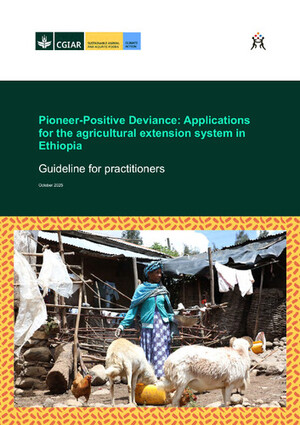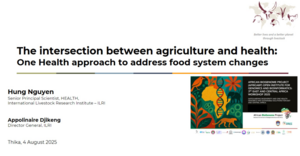
Trade-offs related to agricultural use of antimicrobials and synergies emanating from efforts to mitigate antimicrobial resistance
Abstract
Use of antimicrobials in livestock and fish production has been increasing drastically in the last decades, with trends pointing towards further increases over the coming years. The situation is particularly complex in low- and middle-income countries (LMIC), where excessive use in intensifying systems and limited access to drugs in some areas are a problem. In more intensive farms, antimicrobials are commonly used to treat and prevent disease in livestock and fish, often masking poor husbandry practice and high level of endemic diseases. On the other hand, the poorest farmers could increase productivity with better access to veterinary drugs to appropriately treat sick livestock. Tackling problems around antimicrobial resistance (AMR) requires a multi-sectoral and multi-disciplinary approach, facilitating synergies, and mitigating trade-offs. On one hand, crucial knowledge gaps exist on transmission on AMR genes at the human, animal and environmental interface, while social science insights are needed to improve understanding of drivers and decision making around use of antimicrobials in agricultural and aquaculture settings. This evidence will then help to define and evaluate interventions needed to achieve development outcomes and to sustainably contain the risks around AMR. Directly linked are important synergies in such that improving husbandry and strengthen disease prevention would promote more productive and sustainable production systems, while at the same reducing need for use of antimicrobials. This in turn would reduce selection pressure and reduce antimicrobial residues in animal source foods. The proposed CGIAR AMR-strategy recognizes these trade-offs and sees opportunities to promote synergies by mitigating AMR risks. The strategy aims to address knowledge gaps and evaluate interventions to reduce use of antimicrobials in agriculture, with focus on livestock and aquaculture. Coordinated through a proposed CGIAR AMR-hub at ILRI, the strategy comprises five areas of interventions which are 1) understand knowledge, attitude, and practices, for antimicrobial use or reduction in use and role of formal and informal markets; 2) research AMR transmission dynamics at the human-animal-environmental interface in different agricultural systems; 3) design and evaluate interventions and incentives to reduce or more effectively use antimicrobials in agriculture in LMICs; 4) support evidence-based policy dialogue for antimicrobial surveillance and AMR strategies; and 5) capacity development. Building on the existing AMR research portfolio in CRPs A4NH and LIVESTOCK, the CGIAR AMR hub brings together researchers from ILRI, IFPRI and WorldFish and aims to closely work with strategic partners from the academic and NGO sector.
Citation
Wieland, B., Grace, D., McDermott, J., Magnusson, U., Waage, J., Fèvre, E., Chadag, M.V. and Schillinger, D. 2018. Trade-offs related to agricultural use of antimicrobials and synergies emanating from efforts to mitigate antimicrobial resistance. Science Forum 2018 Case Study. Rome, Italy: CGIAR Independent Science and Partnership Council.










